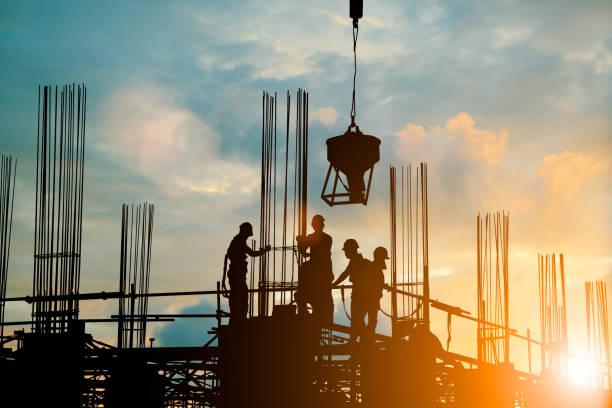Introduction to Real Estate Development: A Complete Journey
The journey of real estate development begins with an idea and ends with its completion. It is a process that transforms a piece of land into a valuable asset. This process includes stages like planning, design, financing, construction, and marketing. Real estate development is not just about constructing a building; it is about improving the infrastructure of a society. In today’s world, this sector has become an important part of the economy, where people invest in residential, commercial, and industrial properties.
Planning Phase: The First Step

The first stage of real estate development is planning. This is the stage where the developer realistically analyzes their idea. The planning phase involves studying the land, considering local zoning laws, and taking environmental factors into account. During this phase, a strong foundation is laid that makes the subsequent stages of the project smoother. During planning, the developer also gains full knowledge of the budget and financing, which helps in assessing the project’s economic feasibility.
Land Acquisition: Selection and Purchase of Land
After planning, the next stage is land acquisition. This is a critical step because the selection and purchase of land play a crucial role in the success of the project. The location, size, and price of the land are key factors in the developer’s decision-making. Ensuring that the land’s legal documentation and title are clear is very important. It is also assessed whether the land is suitable for meeting future needs. Before acquiring the land, the developer must obtain proper approvals from local authorities and government agencies.
Feasibility Study: Economic and Technical Analysis

After land acquisition, a feasibility study is conducted. This study assesses the economic and technical viability of the project. Through a feasibility study, the developer estimates the potential returns of the project. This includes market research, cost analysis, and risk assessment. The study helps the developer decide whether investing in the project will be profitable. Only after the feasibility study does the developer move the project forward.
Design and Architecture: Giving Shape to the Concept
In this stage, the design and architecture of the project are prepared. Architects and designers transform the project’s concept into a physical form. This includes defining the building’s layout, structure, and aesthetics. The design phase also considers environmental sustainability. A mix of modern architecture and traditional elements makes the project unique. During the design process, the client’s needs and desires are also incorporated.
Securing Financing: Financial Arrangements and Funding

Real estate development is a capital-intensive process that requires a significant amount of money. Securing financing is a challenging task. In this stage, the developer needs to arrange funds from banks, financial institutions, and investors. Negotiations regarding financing and finalizing terms take place. The repayment schedule is also set according to the project’s profitability. Secured financing plays a vital role in the project’s timely completion and success.
Obtaining Permits and Approvals: Legal Permissions
Before starting the project, the developer must obtain various permits and approvals. These legal permissions are necessary to begin construction on the land. Permits and approvals include zoning, environmental clearances, and building codes. It is essential for the developer to obtain all these permissions from local authorities. This process may involve delays and challenges, but it is crucial for the project’s compliance and safety.
Site Preparation: Preparing the Land
After obtaining permits, the site preparation stage begins. This is the stage where the land is prepared for construction. Site preparation includes land clearing, excavation, and leveling. Arrangements for infrastructure, such as utilities and road access, are also made. This stage is very important as the project’s foundation and stability depend on it. During site preparation, the environmental impact is also considered.
Construction Phase: Taking Physical Shape
After site preparation, the construction phase begins. This is the most visible and intensive stage of real estate development. The construction phase involves extensive use of labor, materials, and technology. During this stage, the project is built according to the plan. Time management and cost control are carefully monitored during construction. It is ensured that construction meets safety standards. During the construction phase, there is also the possibility of unforeseen challenges and delays, which the developer must deal with.
Quality Control: Safe and Superior Construction
Quality control is a crucial element during construction. The developer and contractors ensure that the quality of construction is maintained at every stage. The aim of quality control is to ensure that the project meets structural integrity and safety standards. The quality of materials, workmanship, and construction techniques are continuously monitored. This process ensures the project’s long-term durability and client satisfaction.
Marketing and Sales: Initiating Project Sales
As the construction phase nears completion, the marketing and sales strategy is activated. This stage is an important phase for the developer to generate profit. The target audience is engaged through a marketing campaign. The sales team interacts with potential buyers and highlights the project’s features and benefits. An effective marketing and sales plan is crucial for the timely completion and success of the project.
Final Inspection: Post-Completion Review
When the project reaches completion, a final inspection is conducted. This inspection ensures that the project meets all specifications and safety standards. The final inspection checks building codes, safety regulations, and quality standards. Representatives from the developer and local authorities conduct this assessment together. After the inspection, the project receives an occupancy certificate, which certifies that the building is safe for use.
Handover and Possession: Transferring to Clients
After the final inspection, the project is handed over to the clients. This is the handover phase where the developer’s delivery is evaluated. Clients take possession of their properties and obtain completion documents from the developer. During the handover, client satisfaction and quality assurance of the project are also considered. This is the stage where the relationship between the client and the developer is formalized.
Post-Completion Services: After-Completion Support
Even after the handover, the developer’s responsibility does not end. Through post-completion services, the developer supports their clients. This includes maintenance services, warranties, and repair work. Post-completion services are crucial for client satisfaction and the long-term success of the project. They ensure that the project remains operational and functional. For the developer, this is an opportunity to build a reputation, which is helpful in future projects.
Conclusion: The Journey from Concept to Completion
The journey of real estate development begins with a concept and ends with its completion. It is a complex and multi-dimensional process that involves stages like planning, design, financing, construction, and marketing. Each stage presents its own unique challenges and opportunities. The secret to successful real estate development lies in a strong vision, detailed planning, and quality execution. In the end, this journey is not just about constructing a building but also about contributing to the infrastructure of society.
